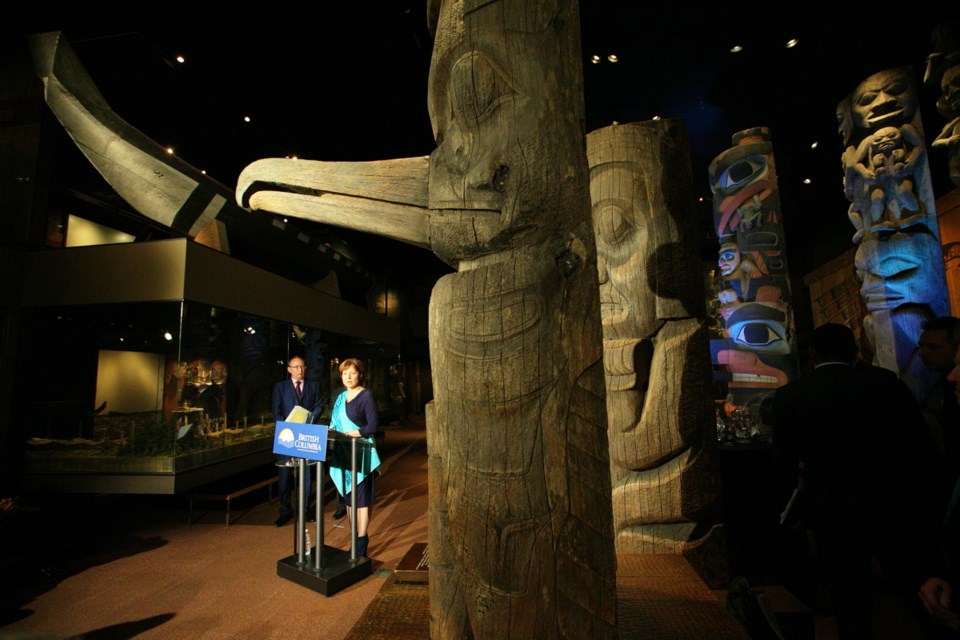First Nations cultural and political leaders are enthusiastic but cautious about working through the Royal B.C. Museum to repatriate ancestral remains and artifacts.
The provincial government announced a $2-million initiative with that goal on Wednesday.
“There is a real opportunity for us to work together, museums, First Nations, heritage organizations, to collaborate more and learn from each other,” said Tracey Herbert, chief executive officer of the First Peoples’ Cultural Council.
But First Nations are also cautious because not all are equipped to receive or properly care for treasures, some which are centuries old.
Debra Hanuse, elected chief of the ‘Namgis First Nation in Alert Bay, said her community, for example, has museum-quality storage in the U’mista Cultural Centre serving a number of First Nations communities.
Hanuse explained the cultural centre is a safe haven for native treasures. In keeping with First Nation traditions, the centre allows families or communities to borrow the artifacts. “You can sign a piece out and dance it in the big house and bring it back, because we all share a common interest in preserving it for all generations,” she said.
But Hanuse said the cultural centre operates on a tight budget and was difficult to start. She also points out that not all First Nations communities have such a resource. “If you don’t have such a facility, you are going to be constrained in your ability to receive treasures back.”
First Nations in B.C. have had some successes in repatriating cultural objects and human remains.
Many were looted from graves and sold to American museums in the late 19th and early 20th centuries but human remains were returned from the U.S. to the Tseycum First Nation in Central Saanich in 2008 and to the Haida on Haida Gwaii in 2003.
The Royal B.C. Museum has had a policy for decades of returning human remains when requested. In 1997, it started contacting First Nations to let them know remains were being held and could be reclaimed.
Herbert said human bones are in a different category than manufactured artifacts. “They are our ancestors,” said Herbert, who comes from the Bonaparte Stuctewewsemc people, in the Interior. “First Nations peoples look at our ancestors in a very special way.”
But she said First Nations peoples can also regard crafted objects with special reverence and it’s important for museums to demonstrate respect when they are displayed. She said a display done in that manner gives First Nations a chance to share their stories and point of view.
“There is so much potential for community involvement and openness and decision making here,” she said. “It’s exciting.”



